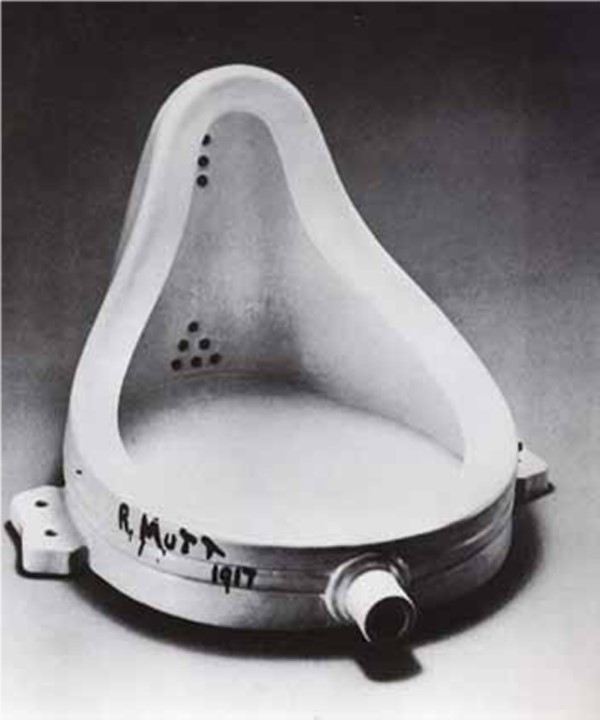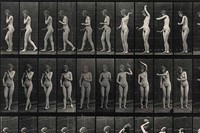Dirt, in all its guises, is a compelling subject — from urinals, human excrement, sex, bacteria and body odour to landfill sites, hospitals, the home and slums. It's ubiquitous, yet something we are often reluctant to confront.
Dirt, in all its guises, is a compelling subject — from urinals, human excrement, sex, bacteria and body odour to landfill sites, hospitals, the home and slums. It's ubiquitous, yet something we are often reluctant to confront. Inspired by British anthropologist Mary Douglas' observation that dirt is defined by its context, Dirt – The Filthy Reality of Everyday Life currently running at the Wellcome Collection, is an in-depth exploration of the theme, bringing together 200 artefacts spanning visual art, documentary photography, cultural ephemera, scientific objects, film and literature. Like previous Wellcome shows, the exhibition manages to pull together eclectic examples to help clearly communicate a complex subject – detailed illustrations depicting the lifecycle of a flea, a tiny 17th century microscope, archive STD posters, interior shots of the Deutsches Hygiene-Museum and an immersive video installation of New York’s largest landfill. AnOther spoke to curator Kate Forde about the exhibition's beginnings, sex and sin and her favourite cleaning regime.
How did the exhibition's theme come about?
Dirt is a really fascinating subject – not least because it’s so difficult to define. On one hand, dirt is the stuff we spend a great deal of time and energy avoiding or cleaning away. On the other, it’s the intensely precious ground beneath our feet, the soil in which we grow our food, the stuff that supports and sustains us. And dirt is a timely subject – during an era when our economies are generating more waste than ever before and when over 50% of the world’s population now live in cities, and we are potentially at greater risk from infectious disease caused by overcrowding and inadequate sanitation. As soon as we began to think about this subject we realised how interesting it would be to consider something which is all around us but which is often overlooked and seldom celebrated.
What's your favourite exhibit?
One of them is a painting by the Dutch artist Pieter de Hooch (on loan from The Wernher Collection and English Heritage) from c. 1670. In the foreground a maid sweeps a comparatively bare but already immaculate room. Behind her a mother nurses her child beneath as sunlight streams in, casting the shadow of a cross on the wall. The painting is a celebration of domestic virtue uniting cleanliness and godliness, a theme which features prominently in Dutch painting of this era. The Dutch themselves were rather satirised by foreign travellers to the Netherlands at this time who regarded them as being obsessed with eradicating dirt and ‘perfect slaves to cleanliness’.
What's your favourite cleaning regime?
I quite like scraping off the lime scale around the kitchen taps when it’s got really thick and crusty but basically I subscribe to Quentin Crisp’s view of housework – he said that the dust doesn’t get any thicker after three years.
'Get dirty' is one of the slogans of the exhibition and one of the many examples where dirt carries sexual connotation. Why do we often associate dirtiness with sex and sin?
Attitudes towards dirt have changed radically over the centuries. For example cleanliness has not always been associated with godliness (in John Wesley’s phrase). In early Christian traditions, cleanliness was sometimes seen as a sign of vanity or even sexual license so the early saints mortified the flesh and dressed in dirty rags. Today being labelled as ‘dirty’ sexually can actually be a kind of compliment, although one doesn’t want to be considered really dirty (infected with disease). It’s a huge question, but one of the reasons why I guess we equate sex and dirt is because sex, like defecation is a reminder of the fundamentals of life, the fact that we are all mortal excreting beings. And this isn’t always a subject for the sentimental.
Dirt has often been known to manifest itself as an art form. Hussein Chalayan notoriously buried his debut collection before showcasing it on the runway. Why are artists so drawn to the notions of dirtiness?
I wonder if some artists’ fascination with dirt is in part disaffection with modernism’s hygienic ideologies. Dirt is certainly a recurring theme – from the surrealist roots of abject art, to Gilbert and George’s Naked Shit pictures. Dirt, as well as being disturbing or shocking can also be beautiful. In terms of the artwork in this exhibition. I would mention particularly Serena Korda's project Laid To Rest which responds to the history of the dustheaps of nineteenth century London and Santiago Sierra's remarkable Anthropometric Modules made from human faeces collected by the workers of Sulabh International, a charity that provides public toilets across India.
Dirt – The Filthy Reality of Everyday Life runs until 31 August at Wellcome Collection, London.
Text by Laura Bradley



